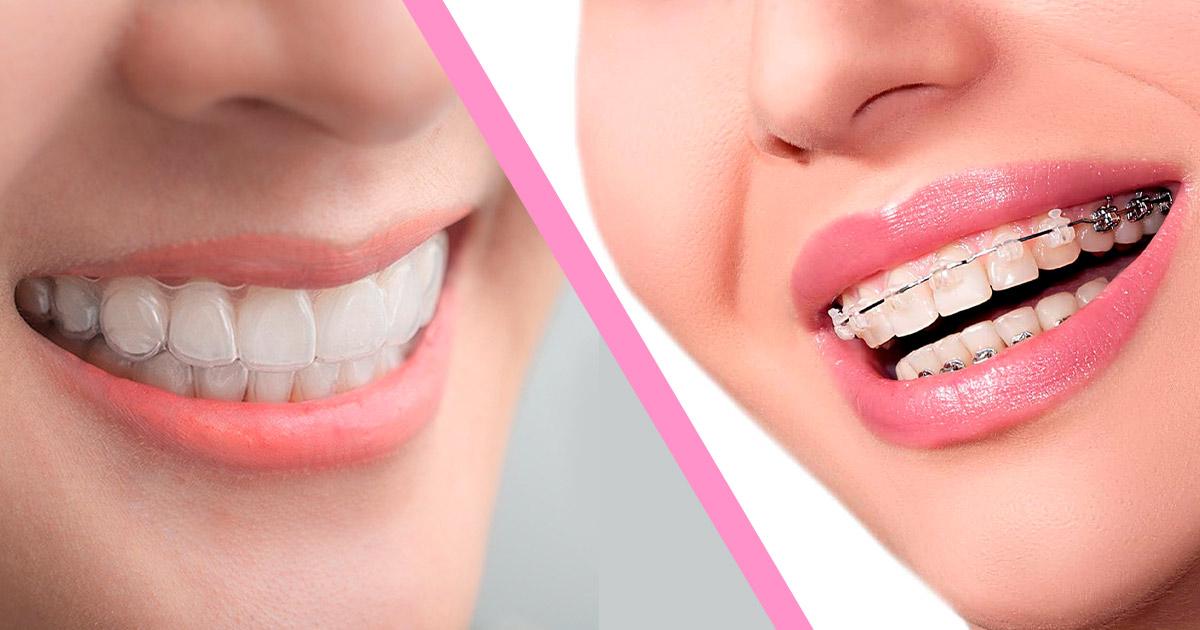Know the Difference Between Invisalign and Braces: Choosing Your Best Smile

Almost everyone, around 96%, say having a smile matters a lot for how someone looks. That’s why many folks decide to get braces or Invisalign to make their teeth nice and healthy. Now, when it’s about picking between invisalign and braces, which is the better choice for you or your kid? Indeed, that’s an excellent query! It’s really about your preferences and what holds significance for you. Continue reading to uncover all the essential insights about the difference between invisalign and braces before making your decision.
What’s the Difference Between Invisalign and Braces?
If you want to know what sets both of these treatments apart, below are some things to get you started;
Appearance
The biggest difference between braces and Invisalign. And in this aspect, Invisalign always comes out on top. Invisalign is designed to be almost invisible, while regular metal braces tend to stand out more.
Invisalign uses clear plastic for its trays, but braces are made of metal. Some young ones like to have fun by choosing different colored bands for their metal braces, but generally, both kids and grown-ups prefer how Invisalign looks.
So, if you’re someone who wants your teeth to be straightened in a way that’s not very noticeable, Invisalign is the better option.
Comfort
Making your teeth straight isn’t always easy for anyone. Whether you wear braces or Invisalign, moving your teeth around can sometimes hurt.
But, Invisalign usually feels more comfy compared to regular braces. It doesn’t push your teeth as hard. On the other hand, braces might have parts that are sharp and could accidentally scratch your inner lip or tongue.
If you or your kid is into sports, metal braces could be a bit risky if there’s any accidental bumping. After a while, folks get used to either braces or Invisalign and start feeling more at ease with them.
Effectiveness
Another difference between Invisalign and braces is that braces can’t be removed while Invisalign can be if you wanted to. Braces have been utilized over a considerable span to align teeth and enhance smiles. When you have braces, you can’t take them off on your own. So, you wear them all the time, 24/7, just like the orthodontist suggests.
Invisalign, however, has a challenge. Its trays are removable, so people might not follow the recommended time to wear them. And if you forget or lose the trays, your teeth might move when you’re not wearing them.
Usually, folks with Invisalign wear the trays less than they should, which could make the treatment take longer. But if your teeth are seriously crooked, traditional braces tend to work better. Invisalign might not fix teeth that are twisted or overlap a lot.
Care and Cleaning
Taking care of your teeth is really important, whether you wear braces or Invisalign aligners to straighten them. Let’s talk about how to keep your teeth and braces or aligners clean. If you have braces, the process of cleaning is quite manageable.
It’s a bit easier because you can brush your teeth and use dental floss just like usual. Nonetheless, there are instances where food debris might become trapped in the metallic components of the braces. In such scenarios, employing a smaller brush could be necessary to eliminate these particles.
Now, if you’re using Invisalign, the brushing and flossing part is similar to what you do normally. However, when it pertains to maintaining your Invisalign aligners, there are additional steps to consider. After your meals, it’s advisable to ensure your trays are well-maintained. This can be achieved by rinsing them with lukewarm water and gently brushing them.
There’s also a special cleaning solution designed for Invisalign trays that you can use. Here’s the thing – cleaning those tiny spaces in the Invisalign trays can be a bit tricky, especially when you’re not at home. If you don’t clean them properly, bacteria might start to grow or bits of food could get stuck there.
Convenience
Braces have their pluses. You don’t need to bother taking them out, which can be nice. However, they can be picky about the foods you eat. Some stuff you might really like can’t be eaten with braces, and that can be frustrating. Now, Invisalign has its own convenience. If you’re in the mood for crunchy or sticky foods, you’re in luck because you can take the aligners out.
However, there’s a small catch: it’s important to remember to remove and store them correctly. If you or your child have a habit of misplacing items, Invisalign might not be the most suitable option. And think about this – when you’re with friends or at events, it might be awkward to excuse yourself to remove the trays before munching and then put them back in. It’s like a little challenge.
Follow-Up and Post-Treatment
It’s important to see your orthodontist regularly, no matter if you’re wearing braces or using Invisalign. These appointments help keep your teeth straightening journey on track. For braces, you might need to visit the orthodontist every month, while with Invisalign, it’s typically around every 4 to 6 weeks.
Once your braces treatment is done and your teeth are aligned just right, there’s still a bit more to do. You’ll need to wear something called a retainer, usually during the nighttime. This helps make sure your teeth stay in their new positions. If you skip this step, your teeth could start moving back to where they were before.
Invisalign has a similar story. After you’re all set with your treatment and your teeth are nicely aligned, you’ll need to wear a tray at night. This step is like a little insurance to keep your smile looking great. So, whether you go with braces or Invisalign, remember that these follow-up routines are important to keep your teeth in their new, improved positions.
Price
When you’re thinking about the money side of things, traditional braces might be the choice that’s easier on your wallet. They usually cost less than other options. The price for braces usually falls between $2,500 and $8,000.
Now, if you’re considering Invisalign, the cost can be a bit different. It depends on how much work your teeth need. More work means more trays. So, Invisalign might cost you somewhere from about $3,500 to $8,000.
It’s smart to have a chat with your orthodontist about the cost before you decide. If you have dental insurance, they might help cover the bill for braces or Invisalign, at least partially. You can reach out to your insurance or look up your coverage details to get an idea of how much you might need to spend on either braces or Invisalign.
Know What the Differences Between Braces and Invisalign Are to Make an Informed Decision
In the quest for a confident smile, choosing between Invisalign and braces is no small decision. Both options come with their own set of benefits and considerations. Regardless of your choice, maintaining dental hygiene is crucial. Regular appointments, post-treatment care, and price considerations are all part of the journey to a straighter smile. Ultimately, whether it’s Invisalign or braces, your unique needs and preferences will guide you towards a decision that brings out the best in your smile.

